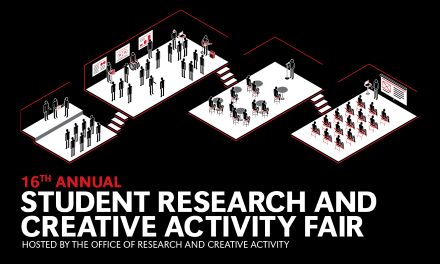Zebrafish Navigate a T-maze Using Spatial Cognition
Presenter Type
UNO Undergraduate Student
Major/Field of Study
Neuroscience
Advisor Information
Dr. Ryan Wong, University of Nebraska at Omaha
Location
MBSC Ballroom Poster # 909 - U
Presentation Type
Poster
Start Date
24-3-2023 2:30 PM
End Date
4-3-2023 3:45 PM
Abstract
Spatial cognition is the mechanism by which an organism navigates their environment and remembers the location of significant places and is largely dependent on an organism’s ability to use either allocentric and egocentric cues. Allocentric cues are the external features of an environment, such as the angle of the sun. Egocentric cues are based upon the body’s orientation, such as turning left or right. Though both of these cues are often interinvolved in spatial cognition, they do contain defining characteristics involving distinct brain regions and contribute to memory and learning in distinct ways. This project investigates the ability of zebrafish to use spatial reasoning to navigate a T-maze and find the shelter. For the conditioning phase, one arm of the maze is filled with a shelter, encouraging the fish to prefer it while the other is left bare. After conditioning, the fish are tested on how quickly they enter the correct arm, without any shelter cues, and which arm they enter into first. This study gives novel insight into the ability of zebrafish to navigate their environments using spatial cognition.
Scheduling
10:45 a.m.-Noon, 2:30 -3:45 p.m.
Zebrafish Navigate a T-maze Using Spatial Cognition
MBSC Ballroom Poster # 909 - U
Spatial cognition is the mechanism by which an organism navigates their environment and remembers the location of significant places and is largely dependent on an organism’s ability to use either allocentric and egocentric cues. Allocentric cues are the external features of an environment, such as the angle of the sun. Egocentric cues are based upon the body’s orientation, such as turning left or right. Though both of these cues are often interinvolved in spatial cognition, they do contain defining characteristics involving distinct brain regions and contribute to memory and learning in distinct ways. This project investigates the ability of zebrafish to use spatial reasoning to navigate a T-maze and find the shelter. For the conditioning phase, one arm of the maze is filled with a shelter, encouraging the fish to prefer it while the other is left bare. After conditioning, the fish are tested on how quickly they enter the correct arm, without any shelter cues, and which arm they enter into first. This study gives novel insight into the ability of zebrafish to navigate their environments using spatial cognition.

